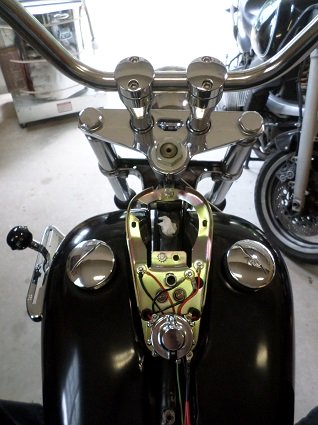Wide Glide Conversion
Article by Mark Trotta
Originally offered on the FXWG beginning in 1980, Wide Glide forks and triple trees are a popular swap to many other Harley models.
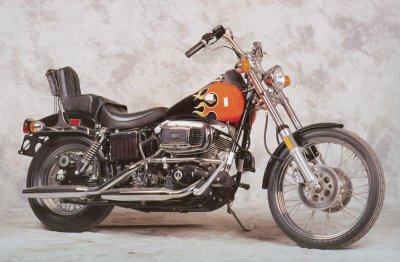
Since all 1949-up Harley Big-Twin frames have a 1.00" neck diameter, conversions to other models are fairly easy.
Wide Glide Specs
The original W/G front forks measured 1-5/8" in diameter. Somewhere in the eighties, the Motor Company started farming out forks overseas and began the listing of fork diameter in millimeters instead of inches. Since then, fork diameter has been referred to as 41mm.
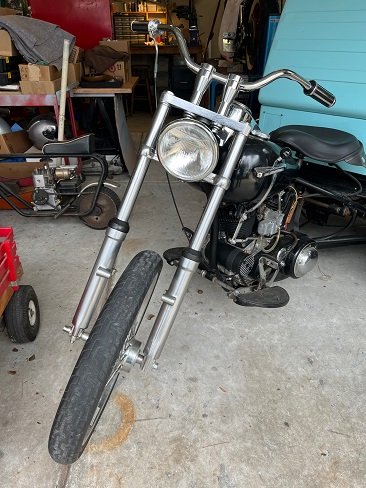
The spacing dimension is 9.875" between fork tube centers. This is the same as earlier Hydra-Glide, Duo-Glide, and Electra-Glide forks, so early FL front ends are also called Wide Glides.
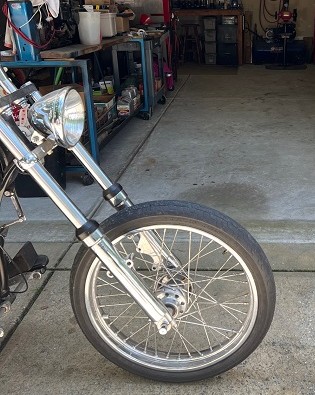
The difference is, factory Wide Glide triple trees do not have a spot to attach cowbells and upper cover, the FL lower tree does.
A 'Mid-Glide' is 8.875" between fork tube centers.
A 'Narrow-Glide' is 7.00" between fork tube centers.
Early W/G models had dual disc front brakes. Later models had a single-disc brake with a single-piston caliper.
In 2000, dual four-piston calipers were fitted, which made a substantial difference in braking. The 2000-up Wide-Glide front wheel hub was upgraded with sealed bearings.
NOTE: Factory Wide Glide headlamps were a different size than other models.
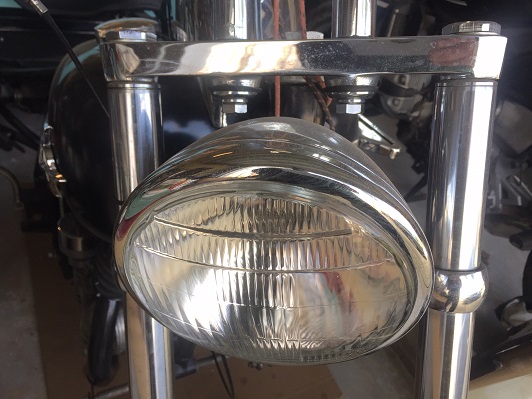
In addition to the FXWG models, W/G front ends were factory fitted to 1980-1983 FWDG Dyna models, and several Softail models from 1993-2003.
Front Axle Diameter
Depending on what year and model motorcycle, front wheel axle size will vary. Starting in 2000, Harley went to 1" front axle bearings on touring bikes. In 2008, they went to a 25.8mm bearing, which is a fraction of an inch different.
The sliders are the same for the 1" and the 25.8mm axles, but the bearings, spacers, and axles changed. There are different kits available so you can switch to the appropriate bearings needed.
Harley Triple-Tree Identification
Before starting a Wide Glide conversion, take note of the fork stops (the short nubs on the lower triple-tree that bump against the steering tube). Watch for nubs that have been sheared off, an indicator of accident damage.
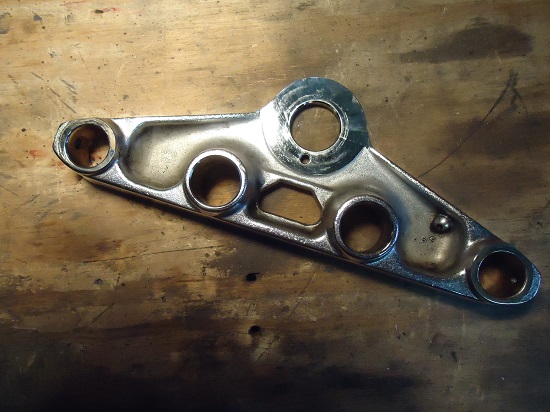
The 1987 or so FX models had a steel lower tree, but the rest are aluminum. Softail Wide Glide trees and the ones for FXDWG are slightly different on the fork stop.
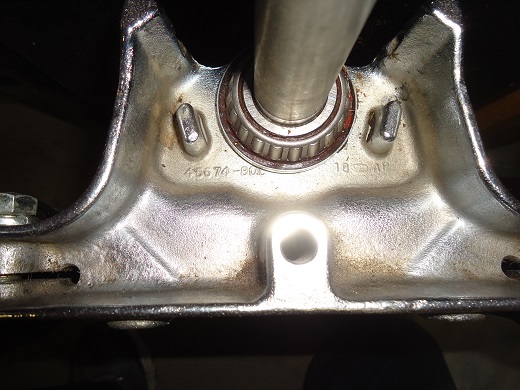
Some forks have mounts on the sides of the upper and lower trees for mounting the aluminum headlight tins. The nacelle unit will use a spacer ring to adjust the headlight position.
Factory vs Aftermarket
The aftermarket for stock replacement and custom hydraulic forks is huge, making a W/G conversion complete if missing parts. There are literally hundreds of different tree-fork combinations from dozens of companies that you can buy ranging from low-end stock assemblies to complete custom fabrications.
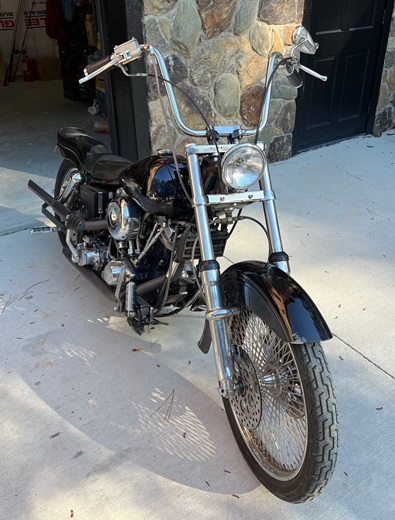
Wide Glide forks, tubes, and trees are all produced in the aftermarket by various suppliers. Mostly chrome units are offered. Some triple tree sets use a lower tree with the mounts shaved off for custom applications.
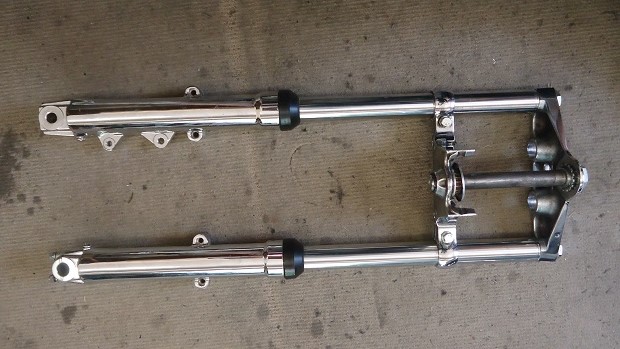
The front end in the above picture appears to be a pre-2000 single-disc with 41mm fork tubes, H-D part # 45674-80c. The '80' tells it is a 1980 year beginning manufacture part, but remember that Harley puts production numbers on a lot of parts that aren't actual part numbers.
Read: Harley Forks Identification
********************
Conversion Kit for 1984-1999 Narrow Glide Models
Here's a narrow to wide glide conversion kit that allows use of narrow glide 19" or 21" wheel (found on FX, FXR, FXD and XL models) to be installed in a 41mm Wide Glide front end. The kit includes an aluminum disc spacer (second spacer for dual disc available), socket head screws, axle spacer and 3/4" axle.
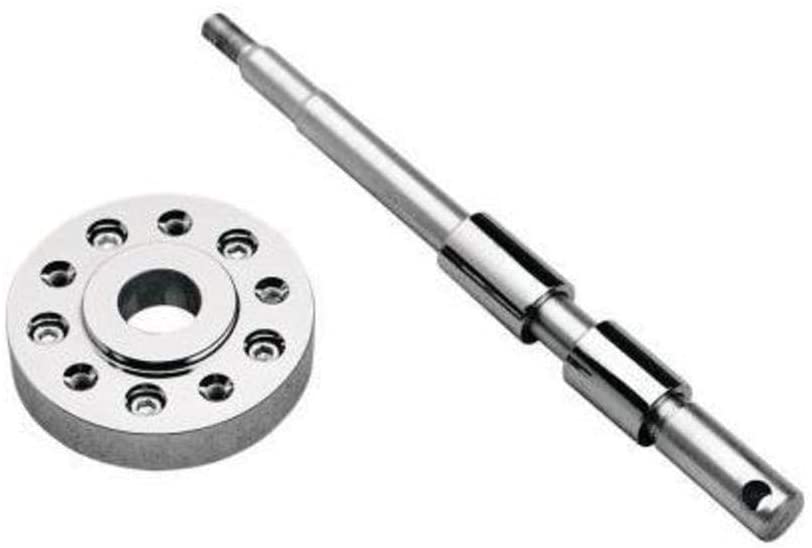
Shop: 1984-1999 Narrow-To-Wide Glide Wheel Conversion Kit
********************
Wide Glide Conversion to Sportster
From 1957 through 1977, Sportsters had a 7/8" neck, and 1978 through 1981 Sportsters had a 15/16" neck. In 1982, Harley standardized neck sizes, and 1982 and up Sportsters have a 1" neck like all Big-Twin models.
If you're considering converting your pre-1982 Sportster to a Wide Glide front end, there are no factory triple trees that will fit the 7/8" or 15/16" necks. The best way would be finding an aftermarket kit, but we don't know of one that is presently available.
********************
Front Fender Adapters
If you want to run a front fender with either a 19" or 21" wheel, Drag Specialties offers fender spacers to permit use of your stock fender.
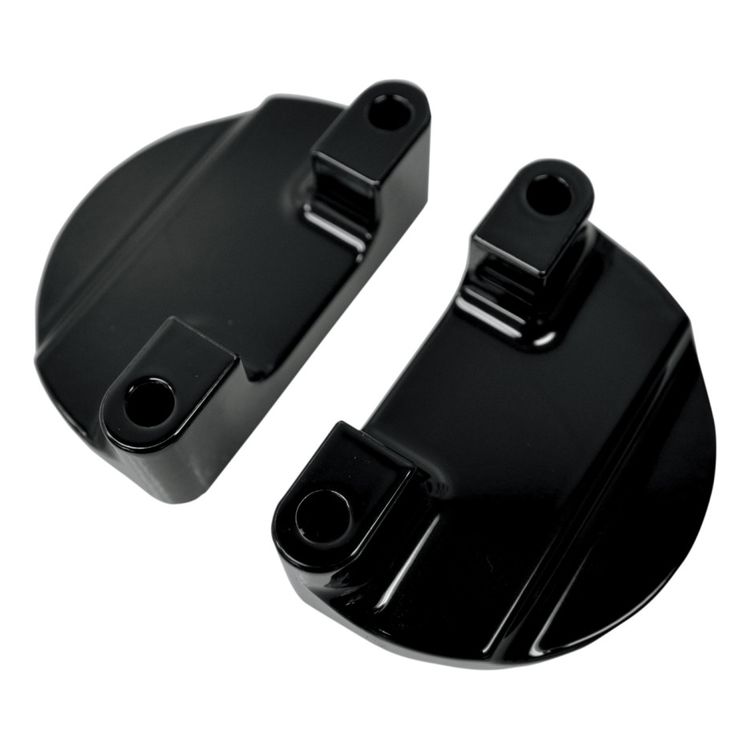
Shop: Fender To Fork Adapter
The adapters are made of aluminum and designed to fit Harley touring models 1984 through 2013. Made in USA.
********************
Fork Seal Kit
James Gasket offers an excellent fork seal kit for 1980-1984 Wide Glide. Made in USA.
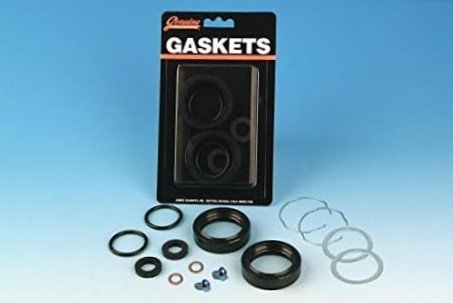
For later model fork seal kits click here.
********************
What Weight Fork Oil Is Best?
10W fork oil is better for colder conditions, and 30W is better for very hot weather conditions.
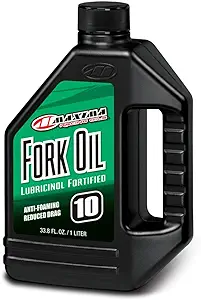
For average conditions, 20 weight fork oil is best.
Most factory service manuals state that fork oil should be changed every other riding season, but that also depends on how much (or how little) you ride.
********************
Below are Wide Glide fork oil capacities:
9.0 to 10.2 Oz..... FXWG/FXST 1980-84
10.2 to 11.2 Oz..... FXWG/FXST 1985-2006
10.2 to 11.2 Oz..... Dyna Wide Glide 1991-2005
TIP: An easy way to measure fork oil is to push the forks down all the way while the caps are off, and fill it to 5" below the upper edge of the fork tubes.
********************
Related Articles:
Harley Forks Identification
Hydra Glide Fork Seal Replacement
Hydra Glide Brake Drum and Shoes
1977-1983 Harley Dual Caliper Rebuild
Replace Fork Seals 35mm
